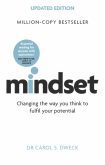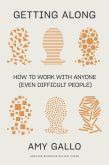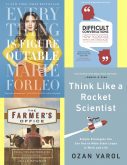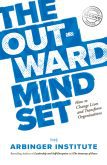Temple Grandin’s Guide to Working with Farm Animals: Safe, Humane Livestock Handling Practices for the Small Farm
By Temple Grandin
Storey Publishing, 192 pages
What if there was a way to get inside your animals’ brains to figure out what they’re thinking and why they act in the (frustrating!) ways that they do? You can do exactly that if you pick up a copy of Temple Grandin’s Guide to Working with Farm Animals: Safe, Humane Livestock Handling Practices for the Small Farm.
Consumers are increasingly concerned with where their food comes from and how it’s been grown or raised. Calm handling and animal welfare is key to your farm’s bottom line. Many studies have clearly shown that animals who fear people are less productive or have lower weight gain.
Read Also

Employment Agreements Can Help Protect Your Farm
Entering into employment agreements with each of your farm employees should be at the top of every farm’s “to do” list, but caution must be exercised.
I was fortunate to have attended a mini conference with Temple Grandin as speaker a few months ago. Her “visual thinking” perspective is the foundation for her deep understanding of and insights into animal behaviour. “Animals … think only in pictures, sounds, smells, touches, and tastes,” Grandin says. “This sensory-based thinking … becomes a problem when people interact with animals based on their own (verbal thinking) perspectives, rather than attempting to view the world the way an animal experiences it.”
For a clearer understanding of specific animal behaviours and what they mean for you as the handler, Grandin suggests putting in the effort to observe your animals — how they spend their time, move around, forage, interact with one another and with you. “Raising animals kindly and caring for them in a way that makes them content ensures good health and allows them to grow faster … The results are both gratifying and profitable,” she says.
“Animal thinking and learning are very specific,” notes Grandin. Since animals lack language, sensory input (sound, smell, touch, taste) are stored in their photographic memories. These sensory associations are an important part of the animal learning process; they will return to these visual memories for life.
For example, Grandin tells the story of how a black cowboy hat (it didn’t matter who was wearing it) became imprinted on a horse’s memory as a fear trigger because the horse had been previously mistreated during a veterinary procedure. Similarly, many cattle are afraid of a specific head gate because one hit them on the head at their home farm. Even when transferred to another farm, if the gate was the same, they would not enter the chute.
In addition to covering all the senses and how animals use them, Grandin explains the physiology of fear and specific signs that indicate whether an animal is alert, has mild anxiety, is afraid, or is completely terrified and panicked. She writes about how to teach animals to trust and co-operate, and she offers plenty of tips and tricks for preparing animals to not fear new things.
A whole chapter covers the effects of genetics on learned behaviour. Grandin notes that we should select for optimum production, not maximum since there will always be a trade-off between traits. For example, sheep with higher reproductive function typically have lower immune function. She also says that, regardless of breed, animals with a larger, stockier body tend to be calmer and less fearful than fine-boned, slender animals who are typically flightier. (Fun genetic fact: did you know that the placement and type of hair whorl on a cow’s head can indicate temperament and/or whether they have defective sperm? Learn all about it in the book!)
Section two covers tactics for handling livestock humanely and safely. The book is packed throughout with photos that illustrate the behaviours she’s writing about. This section also includes multiple diagrams on flight and pressure zones and how different types of animals housed outside react to enclosures or go through sorting facilities.
The final section of the book focuses on the basics of designing a handling facility and what mistakes to avoid.
While the book is aimed at smaller producers and people just starting out with animals, it makes excellent reading for all animal caregivers. Read it for your own safety and to reduce your own stress, not just the animals’. In fact, I’m surprised it’s never been given out for free through producer organizations. I’ve worked with animals my whole life and this book still taught me several things.
















